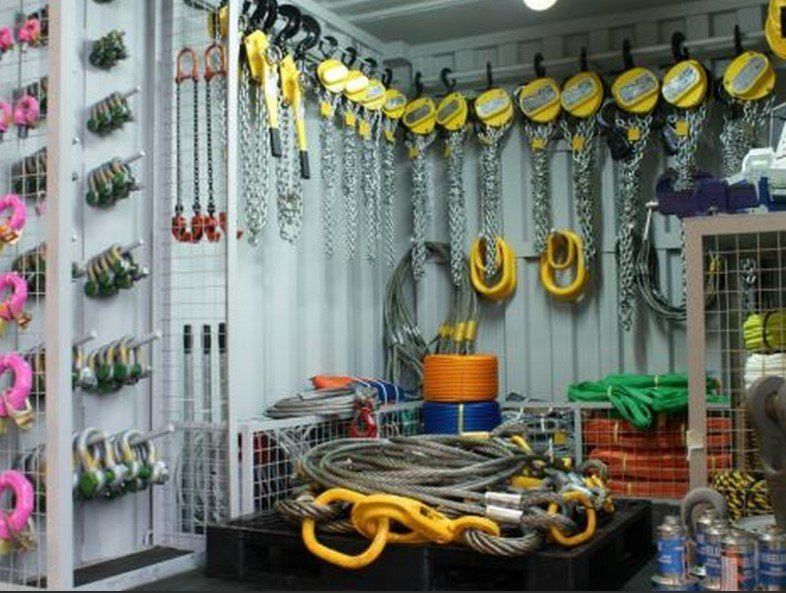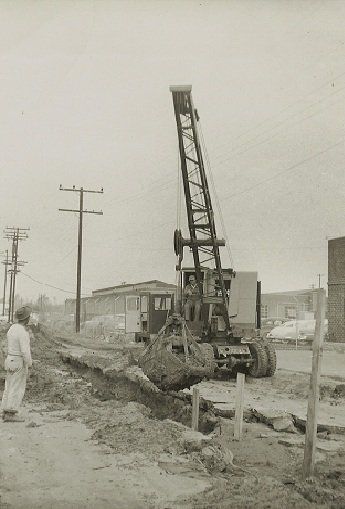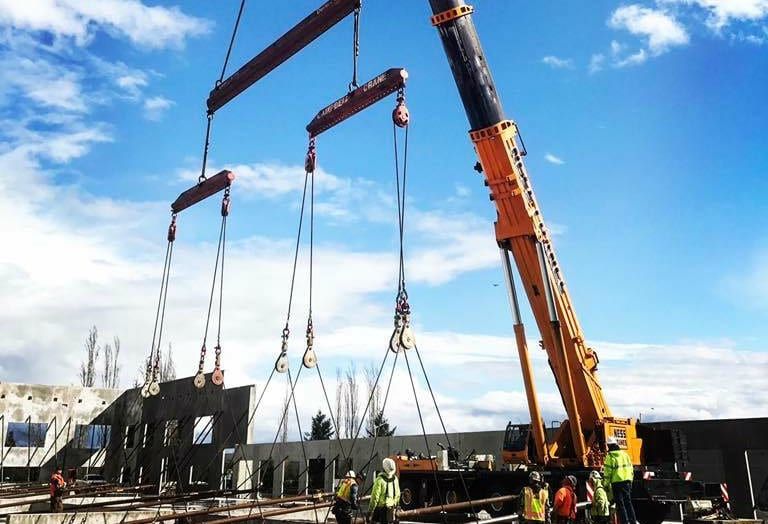Blog Layout
The Evolution of Industrial Crane Machinery
Jan 18, 2024
Back when you first started your local crane company, the machinery landscape looked a lot different than it does today. Over the decades, you've witnessed firsthand the evolution of the equipment that's so vital to your business. Let's take a quick tour through some of the major developments you've seen in industrial crane designs during your years in the industry.
More Compact Footprints
One of the most noticeable changes in cranes is how much smaller and more maneuverable many modern models are. According to Medium, in 1846, William Armstrong created the modern crane. When your local crane company first opened, many of the most powerful cranes needed huge amounts of space. Today's designs take advantage of improved engineering and materials to pack just as much lifting capacity into more compact packages. You'll find several crane types, like rough-terrain models with telescoping booms that provide excellent lift capacities while taking up minimal space on tight worksites. This allows you to complete jobs in locations that used to be off-limits decades ago when you started your local crane company.
Enhanced Safety Features
Over the years, you've also seen cranes become much safer tools. Now, most modern cranes are packed with smart safety features to prevent accidents and injuries. From automatic safe-load indicators to anti-collision tech and operator alertness monitoring, today's cranes have your team's safety on top-of-mind. This focus on safety has been an invaluable change, helping you keep your crew protected on the job. You no longer have to worry quite as much when operating around other workers or valuable infrastructure thanks to innovations in crane tech.
Advanced Precision & Control
Finally, the level of precision and control possible with current crane machinery is light years beyond what was available when your local crane company first formed. Using a combination of computer-aided load movement planning, GPS-guided positioning, and other Intelligent Crane Control systems, you can maneuver massive loads seamlessly into extremely tight spaces. Loads that once may have required your most seasoned operators to gingerly finesse for hours can now be moved accurately into position in minutes with advanced cranes. This has opened up all sorts of new business opportunities that may not have been feasible when you started your local crane company years ago.
While the core purpose of cranes remains unchanged, the actual machinery behind them continues advancing rapidly even today. You can only imagine what the next generation of crane designs might enable as you continue growing your local crane company
down the road. If you're interested in renting a crane today, Borsheim Crane Service LLC can help. Reach out to us to inquire about pricing and availability

By 7029492520
•
30 Nov, 2022
Having the right people know what they are doing and why they are doing it is critical in any lifting operation. In 2020 the number of fatal occupational injuries by event show 716 deaths from contact with objects and equipment. U.S. Bureau of Labor Statistics IIF Home : U.S. Bureau of Labor Statistics (bls.gov) There are several factors to consider when rigging and lifting a load. Overlooking any of them can spell danger for your worksite. 1. Not Knowing the weight of the load including rigging equipment used in the lift. 2. Ignoring load control 3. Hiring unqualified workers* 4. Choosing the wrong rigging Equipment Rigging accidents are a direct result of preventable errors. With possible errors in calculating the weight of the load to verifying a riggers qualifications. These errors can cause significant damage to life and / property. It is critical to remain diligent when rigging to keep your employees and your operation out of harm’s way. Borsheim Team has NCCCO Level 1 and 2 riggers supported by lift directors and engineering available for your next project. Give us a call! *In accordance with OSHA Regulation (1926.1404(r)(1) and 1926.1425(c)) employers are required to use a qualified rigger during hoisting activities for assembly and disassembly work, and whenever workers are within the fall zone and hooking, unhooking, or guiding a load, or doing the initial connection of a load to a component or structure.

By 7029492520
•
30 Nov, 2022
• Harry S. Truman was president. • Roswell UFO incident • First mobile phone network concept from Bell Labs • First instant camera was developed. • Ferrari begins production of sports cars. • The CIA was established. • Cold War beginnings between the East and West • Sound barrier was broken. • Howard Hughes and the first flight of the H-4 Hercules Wooden flying boat nicknamed “Spruce Goose.” 1947 History, Fun Facts and Trivia - Pop Culture | History | Facts | Trivia (popculturemadness.com) Borsheim was founded. Our founder, George A. Borsheim, purchased an excavator and started doing work as Borsheim Builders for local, county, and state entities. The first year was a challenge for a new company and its 4 employees that year. The early projects were on sewer, water, and miscellaneous projects. George was a very skilled operator and teacher and in high demand. He saw a positive impact for his employees, partners, and community and quickly expanded his early excavator fleet with crane attachments. The 50’s and 60’s saw rapid expansion in need for highway and municipal projects. Borsheim Builders was their supplier for ready mix and other building materials. George A. also expanded his building materials into concrete block. Borsheim Holding started Blox Incorporated that provided foundations and walls for buildings in the region. Borsheim Builders was extremely busy in Eastern Montana, Williston, Tioga, Watford City, and the Newtown and Parshall, ND area. In 1964, George A. died and his son, George R Borsheim, took over the leadership role of Borsheim Builders. George R did not miss a beat and expanded the reach of product and service in Eastern Montana and Western North Dakota. In 1972, George R was approached by Harvey Bennett & John Sanders with Cactus Concrete to purchase the ready mix and block businesses. The sales of the Ready Mix and Blox Inc businesses happened at the right time. George was able to expand his crane business. Two important events happened in the late 70’s. Tyler G Goodman became part of the Borsheim team in 1977 and represents the 3rd generation in the company. The second major change was cranes became more mobile and could effectively travel out over 100 miles. The 1980’s brought new challenges and leadership to Borsheim Companies. In 1984, Tyler G. Goodman II took over for his uncle to lead Borsheim into the 21st century. In 2000, Tyler expanded into the Belfield area of North Dakota. By 2003, an office and shop were secured in Fargo, ND. In 2008, an office and shop were secured in Minot, ND. The 2010’s brought new teammates, including the fourth generation into the company – Tyler G. Goodman III in 2013. In 2015, Pro Industrial was founded to supply miscellaneous rigging and supplies to areas served by Borsheim Crane. In 2017, two more companies were established – Borsheim Logistics and Logistic Pros. In 2019, Borsheim Crane began its Heavy Lift Division to provide expanded service in ND, MN, SD, MT, WY, NE, IA, WI, and MO. Our best days are ahead of us and we look forward to serving you and growing with our valued employees, partners, and communities.

By 7029492520
•
30 Nov, 2022
Renting or using a crane service should be a straightforward process. Some things to consider avoiding headaches down the line. Pick a crane service company with a proven process that can analyze, advise, and execute. 1. Communication of what you need and when you need it. 2. Consider the heaviest load to be lifted and other details. a. What Object (s) are you/ do you need lifted. b. Weight of Heavies Object/ Load c. Dimensions of Object/ Load d. Are there designed pick points on the object/ Load. 3. Any special rigging required, or additional staff required for a safe and successful lift. (Engineered lift plan required for work) 4. Height of a sidewall or obstacle. How far from edge of sidewall or obstacle is placement required. 5. Any powerline or other overhead obstructions. 6. Condition of site (muddy, small, or congested) 7. Are there any underground utilities or new excavations that would affect the set-up of the crane. Now, if you put all these tips together and apply them, you’ll have a solid approach that will help for successful and efficient crane rental. If you need any more information or help with a rental or crane service give us a call.
OUR LOCATION
,
This is a placeholder for the Yext Knolwedge Tags. This message will not appear on the live site, but only within the editor. The Yext Knowledge Tags are successfully installed and will be added to the website.
HOURS
This is a placeholder for the Yext Knolwedge Tags. This message will not appear on the live site, but only within the editor. The Yext Knowledge Tags are successfully installed and will be added to the website.
This is a placeholder for the Yext Knolwedge Tags. This message will not appear on the live site, but only within the editor. The Yext Knowledge Tags are successfully installed and will be added to the website.
Monday
Tuesday
Wednesday
Thursday
Friday
Saturday
Sunday
This is a placeholder for the Yext Knolwedge Tags. This message will not appear on the live site, but only within the editor. The Yext Knowledge Tags are successfully installed and will be added to the website.
HOURS
Monday
Tuesday
Wednesday
Thursday
Friday
Saturday
Sunday
This is a placeholder for the Yext Knolwedge Tags. This message will not appear on the live site, but only within the editor. The Yext Knowledge Tags are successfully installed and will be added to the website.
CONTACT US
This is a placeholder for the Yext Knolwedge Tags. This message will not appear on the live site, but only within the editor. The Yext Knowledge Tags are successfully installed and will be added to the website.
This is a placeholder for the Yext Knolwedge Tags. This message will not appear on the live site, but only within the editor. The Yext Knowledge Tags are successfully installed and will be added to the website.
West Fargo Location (701) 203-5544
Minot Location (701) 852-0226
Williston Location (701) 572-6301
Employment Verifications:
HR@borsheimcrane.com
Hi. Do you need any help?
Privacy Policy
| Do Not Share My Information
| Conditions of Use
| Notice and Take Down Policy
| Website Accessibility Policy
© 2024
The content on this website is owned by us and our licensors. Do not copy any content (including images) without our consent.

















Share On: